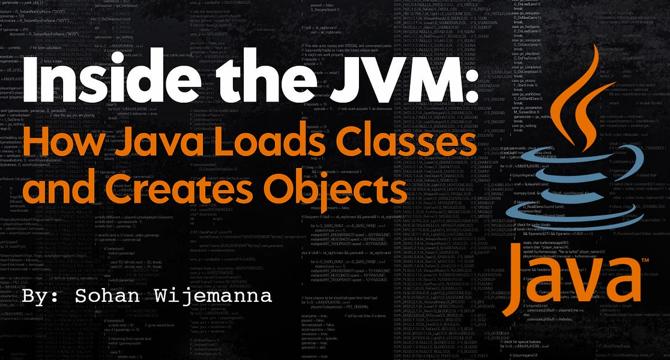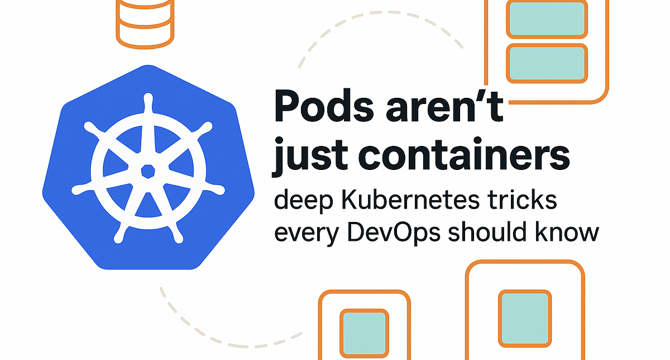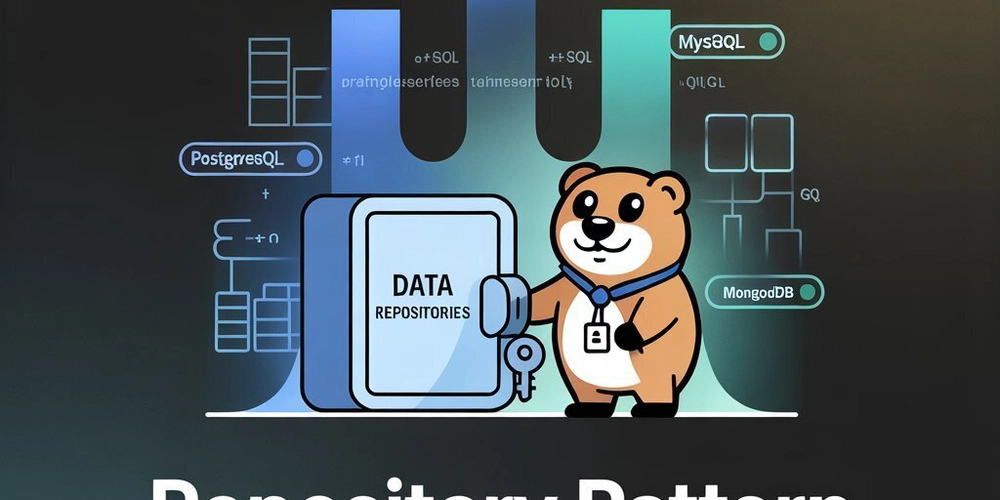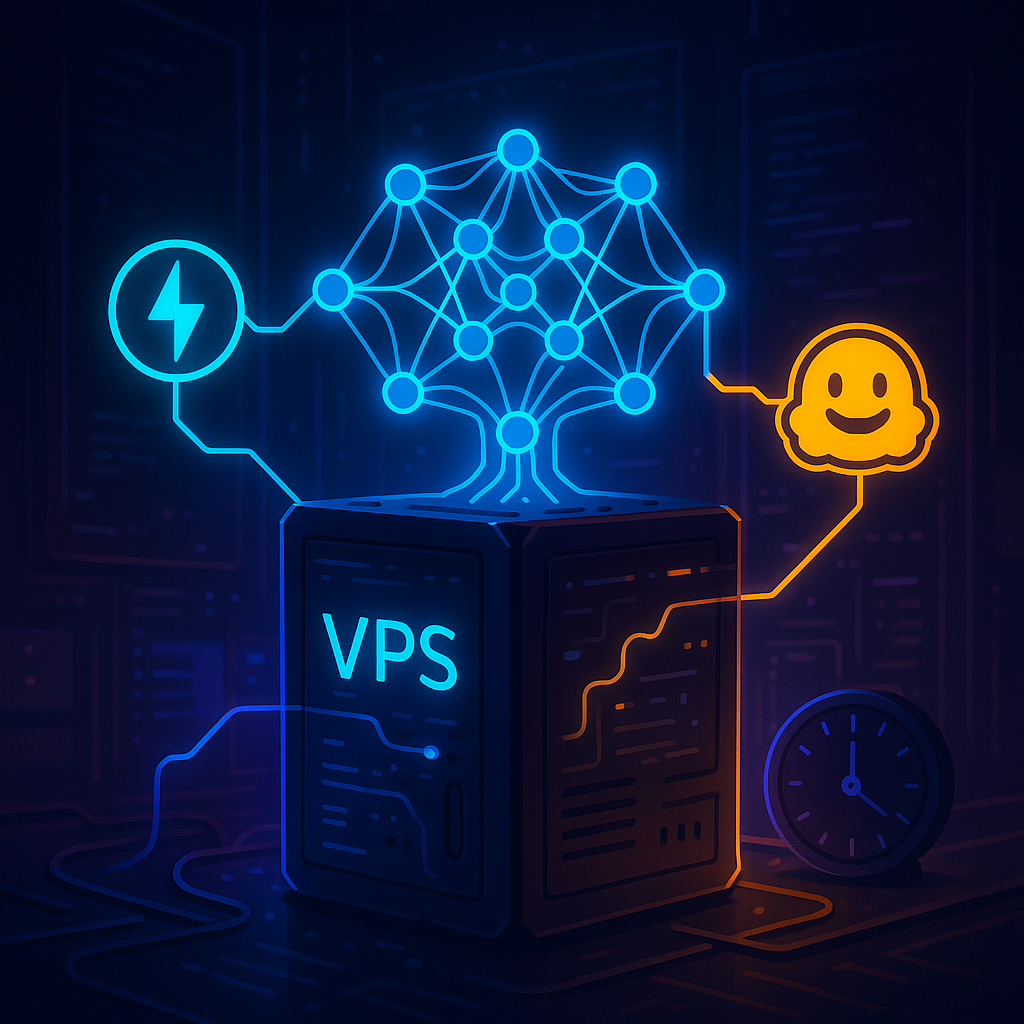Programming News
Medium
1M
245

Image Credit: Medium
Inside the JVM: How Java Loads Classes and Creates Objects
- The blog delves into how Java loads classes and creates objects inside the JVM, focusing on the processes involved.
- Java performs lazy class loading in the JVM, with triggers causing classes to be loaded when needed.
- The class loader locates and loads .class files into the method area of the JVM.
- Java ClassLoader subsystem follows a parent delegation model for secure and consistent loading.
- After loading into memory, classes undergo essential steps before being ready for use.
- Object creation in Java involves mechanisms like new keyword and cloning.
- During object creation, memory is allocated in the heap for all instance members.
- Constructor invocation involves stack frame allocation, assigning arguments, and superclass constructor chain.
- Instance initializers and variable initializers are copied into constructors for proper initialization.
- The JVM returns the reference of the newly created object after constructor execution.
Read Full Article
14 Likes
Dev
1M
159

Image Credit: Dev
Architecture: Your future self will thank you
- Understanding architecture in coding can prevent future chaos and make your code easier to maintain, expand, and understand.
- One well-established pattern is MVC (Model-View-Controller), which helps in organizing code effectively and is crucial to learn before delving into frontend frameworks like React, Angular, or Vue.
- The five main components in any architecture pattern are Presentation Logic, Application Logic, Business Logic, State, and HTTP Library, working together to create a structured codebase.
- In MVC, the Model represents the business logic and state, the View handles the presentation logic, and the Controller acts as the bridge between them, controlling the flow of data.
Read Full Article
9 Likes
Dev
1M
63

Image Credit: Dev
How CSS-in-JS Works and Why It Matters
- CSS-in-JS is a styling approach that involves writing CSS within JavaScript files, typically inside React components, using libraries like styled-components or Emotion.
- Libraries like styled-components and Emotion generate unique class names, inject CSS rules dynamically, and support dynamic styles that react to props or themes.
- CSS-in-JS offers benefits such as scoped styles, dynamic styling, code co-location, theming support, and eliminates the need for class naming conventions.
- Popular CSS-in-JS libraries include styled-components, @emotion/styled, vanilla-extract, and Stitches. CSS-in-JS is recommended for component-based architectures and projects requiring dynamic styles or runtime customization.
Read Full Article
3 Likes
Dev
1M
259

Image Credit: Dev
Day 15/200 (Full stack)
- Day 15 of 200 Days of Code focused on understanding CSS Media Queries, a crucial aspect of responsive web design.
- CSS Media Queries allow for styling based on screen size or device type, ensuring websites adapt to different devices such as smartphones, tablets, and laptops.
- Media Queries enable adjustments like font sizes, layout rearrangements, and element visibility for better user experience across all devices.
- Learning about Media Queries, even in small steps, can lead to significant improvements in project outcomes and enhance coding consistency in the long run.
Read Full Article
15 Likes
Discover more
- Software News
- Web Design
- Devops News
- Open Source News
- Databases
- Cloud News
- Product Management News
- Operating Systems News
- Agile Methodology News
- Computer Engineering
- Startup News
- Cryptocurrency News
- Technology News
- Blockchain News
- Data Science News
- AR News
- Apple News
- Cyber Security News
- Leadership News
- Gaming News
- Automobiles News
Medium
1M
27

Image Credit: Medium
Pods aren’t just containers: deep Kubernetes tricks every DevOps should know
- Pods in Kubernetes offer more than just a container hosting platform, with features like sidecars, init containers, and shared context enhancing functionality.
- Understanding restart policies, probes for liveness and readiness, and balancing them correctly is crucial for maintaining pod health and cluster stability.
- Pod-level patterns like sidecars, ambassadors, and adapters enable cleaner design, separation of concerns, and easy debugging across services.
- Ephemeral containers within Pods allow for on-demand inspection and diagnosis without impacting running containers, aiding in debugging processes.
- Optimizing resource requests and limits within Pods is essential to prevent scheduling issues, evictions, and performance degradation.
- Pod presets and Quality of Service (QoS) classes help standardize resource configurations and prioritize Pods for eviction in case of resource constraints.
- Deployments in Kubernetes manage replica instances of Pods, ensuring high availability and automatic recovery in case of failures.
- Tools like kubectl describe provide insights into Pod failures, aiding in troubleshooting and effective management of Kubernetes resources.
- To excel in DevOps, it's vital to grasp the nuances of Pods, their configurations, and functionalities beyond basic container management.
- By experimenting with these concepts in a test environment, DevOps professionals can enhance their skills and troubleshoot effectively in real-world scenarios.
Read Full Article
1 Like
Dev
1M
363

Image Credit: Dev
Daily JavaScript Challenge #JS-189: Group Anagrams
- Today's JavaScript coding challenge is about grouping anagrams
- Objective: Write a function to group anagrams within an array of strings
- An anagram is a word formed by rearranging the letters of another word
- Challenge participants need to create and test their solutions, sharing their approaches in the comments section
Read Full Article
21 Likes
Medium
1M
109

Enso: Build Smarter Workflows Without Code (And Why Shortcuts Make It Even Better)
- Enso is a visual programming platform that allows users to create, automate, and understand complex logic systems without the need for heavy coding.
- Enso offers a flow-based interface where users connect blocks visually to build workflows, making it intuitive and powerful for beginners, analysts, and developers alike.
- A key feature of Enso is Shortcuts, which enable users to speed up repetitive actions, insert logic patterns quickly, and streamline workflows.
- Enso is revolutionizing automation and workflow building by providing a tool that allows anyone to create powerful solutions without requiring deep technical knowledge.
Read Full Article
6 Likes
Dev
1M
345

Image Credit: Dev
Clean, Performant, and Testable: Mastering Data Access in Go with Repositories & sqlc (2)
- Part 2 of the series delves into implementing effective repositories in Go and addressing critiques.
- The article covers building a manual Go repository to understand structural benefits and eliminate boilerplate.
- It highlights the advantages of repositories, including enhanced separation of concerns, improved testability, and flexibility.
- Observations reveal challenges like SQL strings in code and error handling complexities in manual implementations.
- The benefits of repositories in Go include clear SoC, streamlined testability, and centralized data access logic.
- Acknowledging downsides like boilerplate code and potential over-abstraction is crucial for balanced perspective.
- Critiques of the Repository Pattern are addressed with a Go-specific response, focusing on practicality and adaptability.
- The article exposes how specific repository methods and optimized SQL queries can enhance performance and maintainability.
- The future path involves leveraging tools like sqlc to revolutionize data access efficiency and maintain architectural benefits.
- Part 3 is anticipated to showcase sqlc's role in transforming Go database development for type-safe, efficient, and maintainable data access.
- Readers are encouraged to share their experiences with data access patterns in Go for community learning and growth.
Read Full Article
20 Likes
Dev
1M
723

Image Credit: Dev
Why Your CI/CD Pipeline Needs SAST, DAST, & SCA (Or Risk Becoming a Hacker’s Playground) 🔒💥
- Building a perfect CI/CD pipeline without SAST, DAST, and SCA can make it vulnerable to hackers.
- Speeding up your pipeline without security measures like SAST, DAST, and SCA can lead to various vulnerabilities in the codebase.
- SAST provides the initial line of defense by identifying vulnerabilities like SQL injections and insecure data handling.
- DAST exposes weaknesses in the running application while SCA focuses on auditing third-party code for known vulnerabilities.
Read Full Article
4 Likes
Medium
1M
204

What a great day to be alive!
- Sam Altman and Jonny Ive are teasing the launch of their own AI products set to be released in 2026.
- Apple fan eagerly waiting for WWDC 2025 keynote on June 9.
- Google has also revealed its latest AI products.
- Excitement building up in the AI innovation space with new developments.
Read Full Article
12 Likes
Dev
1M
368

Image Credit: Dev
Why NextJS over ReactJS ?
- Next.js is preferred over React.js for websites due to various advantages it offers.
- Next.js addresses common issues faced with React.js, such as problems with Google search visibility, slow initial loading times, backend requirements, and deployment complexities.
- Key advantages of using Next.js include improved Google search visibility, faster website loading times, smooth navigation within the website, and simplified backend operations through API routes.
- Transitioning from React.js to Next.js is seamless and allows for gradual changes while leveraging existing React knowledge.
Read Full Article
22 Likes
Dev
1M
378

Image Credit: Dev
My Journey with ASP.NET Core & SQL Server: Lessons Learned
- Yasser Alsousi, a .NET developer, shared lessons learned from his journey with ASP.NET Core and SQL Server.
- Key reasons for choosing ASP.NET Core: cross-platform capabilities, high performance, strong ecosystem, and enterprise-ready features.
- Top 3 beginner tips include mastering C# fundamentals, embracing dependency injection, and following database best practices like starting with SQL Server Express and optimizing with Entity Framework Core.
- Yasser optimized an inventory API from 2s to 200ms response times by adding SQL indexes, implementing caching, and using AsNoTracking() for read-only operations.
Read Full Article
22 Likes
Dev
1M
586

Image Credit: Dev
Stop the Hack: Why Quick-and-Dirty Development Is Hurting Us All
- Many people favor quick hackers to build products that do not scale, causing technical debt that cripples teams and ruins products.
- The tech industry's reckless 'move fast and break things' mentality leads to brittle systems and difficulty in maintenance or scaling.
- Choosing trendy stacks like Node.js over more robust frameworks like .NET can result in long-term chaos, lost productivity, and unstable systems.
- To ensure sustainable software engineering and avoid technical debt, it is necessary to prioritize quality over speed and demand better practices for long-term success.
Read Full Article
21 Likes
Medium
1M
372

Image Credit: Medium
How to Deploy an AI Model on a Free VPS with FastAPI + Hugging Face
- This tutorial explains how to deploy a Hugging Face model on a free VPS using Python, FastAPI, and Docker.
- It demonstrates steps to set up an HTTP API to interact with the model in a simplified manner.
- A specific model, TinyLlama/TinyLlama-1.1B-Chat-v1.0, is used in the example for deployment.
- The process involves building the API service, setting parameters, and testing the deployed AI model.
Read Full Article
22 Likes
Dev
1M
304

Image Credit: Dev
Code Smell 301 - Database as Parameter
- Passing databases as parameters creates accidental coupling between domain logic and data persistence mechanisms, violating separation of concerns and making code harder to test, maintain, and evolve.
- To address this code smell, use dependency injection, avoid using the Repository Pattern, separate business logic from data access concerns, and design for decoupling.
- Examples of problems caused by passing databases as parameters include tight coupling, mixed responsibilities, violation of the Single Responsibility Principle, and blurred layers.
- By refactoring to separate business logic and data access, such as in the 'Right' sample code provided, you can improve maintainability and testability of your code.
- Detection of this code smell can be done semi-automatically by identifying database connections or ORM objects passed as parameters to business methods.
- AI generation tools often introduce this code smell by directly coupling database access with business logic, prioritizing working code over clean architecture.
- AI detection tools can identify this code smell by focusing on the separation of concerns and proper use of dependency injection patterns.
- In conclusion, avoid passing databases as parameters to business objects to keep business logic clean, facilitate testing, and maintain a clear separation between domain and infrastructure concerns.
- Related topics include articles on object keys, mocking business, accidental methods on business objects, and inappropriate intimacy in code design.
- Code smells are subjective opinions, and the article emphasizes breaking down large applications into smaller, testable components for better maintainability.
Read Full Article
18 Likes
For uninterrupted reading, download the app